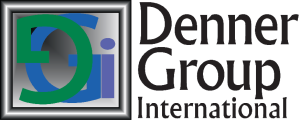Top Chef Yields Innovative Ideas
By Jeri Denniston, Chief Marketing Strategist, Denner Group International
Takeaways: Innovative ideas come from unrelated areas. Chefs stretch their creative thinking to invent unusual and flavorful dishes. Consumer Trend Canvas stimulates innovative solutions.
As I watched a recent TV episode of Top Chef, I thought about how two chefs in particular stretched themselves pairing unusual ingredients from Asian and European cooking to make innovative and flavorful seafood dishes of lobster, clams, and oysters. It made me wonder how we might apply similar concepts to generate innovative ideas with our work with clients.
During this particular competition, the four remaining chefs had to be innovative in their use of ingredients, spices, textures, and flavors when preparing a main dish for four executive chef judges. Of the four contestants, one was eliminated, and the other three went into the final round in Mexico.
Each time the chefs competed, they were given one or more ingredients that must be the featured item in the dishes they prepare. They usually had less than an hour to decide what ingredients and spices to add, how to cook the main protein, and what sauce if any to include. This time also included plating the entrée and then presenting it to the judges.
This particular episode made me think…what can we do to help our clients think more creatively and stretch themselves in their problem-solving? Do the same planning models and tools work for this purpose or can those be adapted to help our clients dig deeper into the issues that are the heart of their challenges? Is there a tool to help them develop innovative ideas to solve critical issues?
Using Trend Canvas to Generate Innovative Ideas
We had the opportunity to test this in a planning project with a large spiritual organization. On the first day of planning, we introduced the Consumer Trend Canvas from Trendwatching.com. Breaking the group into teams of four or five, we had each team use the Consumer Trend Canvas to analyze a critical issue and come up with some innovative solutions.
The beauty of the Consumer Trend Canvas is that it forces you to look outside the organization at what’s driving the changes that affect that particular issue. It also has you look at the basic consumer needs tied to that issue, and the emerging consumer expectations. After reviewing those three areas, you begin to think more creatively about how to address those changes as they apply to the issue you’re tackling. This creates interesting possibilities – innovative ideas – that might not have bubbled to the surface without using the Consumer Trend Canvas.
For this organization, one of the issues was member retention. They were no longer relevant, and consequently, they weren’t attracting younger members or retaining current, aging members. The average age of members was over 70! Without attracting new, younger members, the organization would eventually cease to exist.
We had each team chart their issue, three key challenges, and one to three innovative solutions on a flip chart. Then they shared their solutions with the entire group. This gave the group a list of innovative ideas to pursue further in order to resolve their top critical issues.
We had them prioritize the ideas down to one key idea for each issue. Then we included those ideas as action items under the strategies they came up with on the second day of the planning retreat. This resulted in a manageable list of action steps to pursue to move the organization forward towards its desired outcomes.
Doing this early in the planning session helped them to start thinking creatively as they continued through the rest of the weekend’s planning exercises. It forced them to look outside the organization at global trends that were impacting them now or could do so in the future.
The group successfully completed all the elements of a strategic plan during the two-day retreat. They have written the plan and are now in the process of executing it. In May, we’ll review their progress to see what they have accomplished in their first year of implementation.
What are you doing to be more innovative in your planning and problem resolution? Have you discovered new tools to help you think more creatively and uncover the deeper gold beneath the surface?

